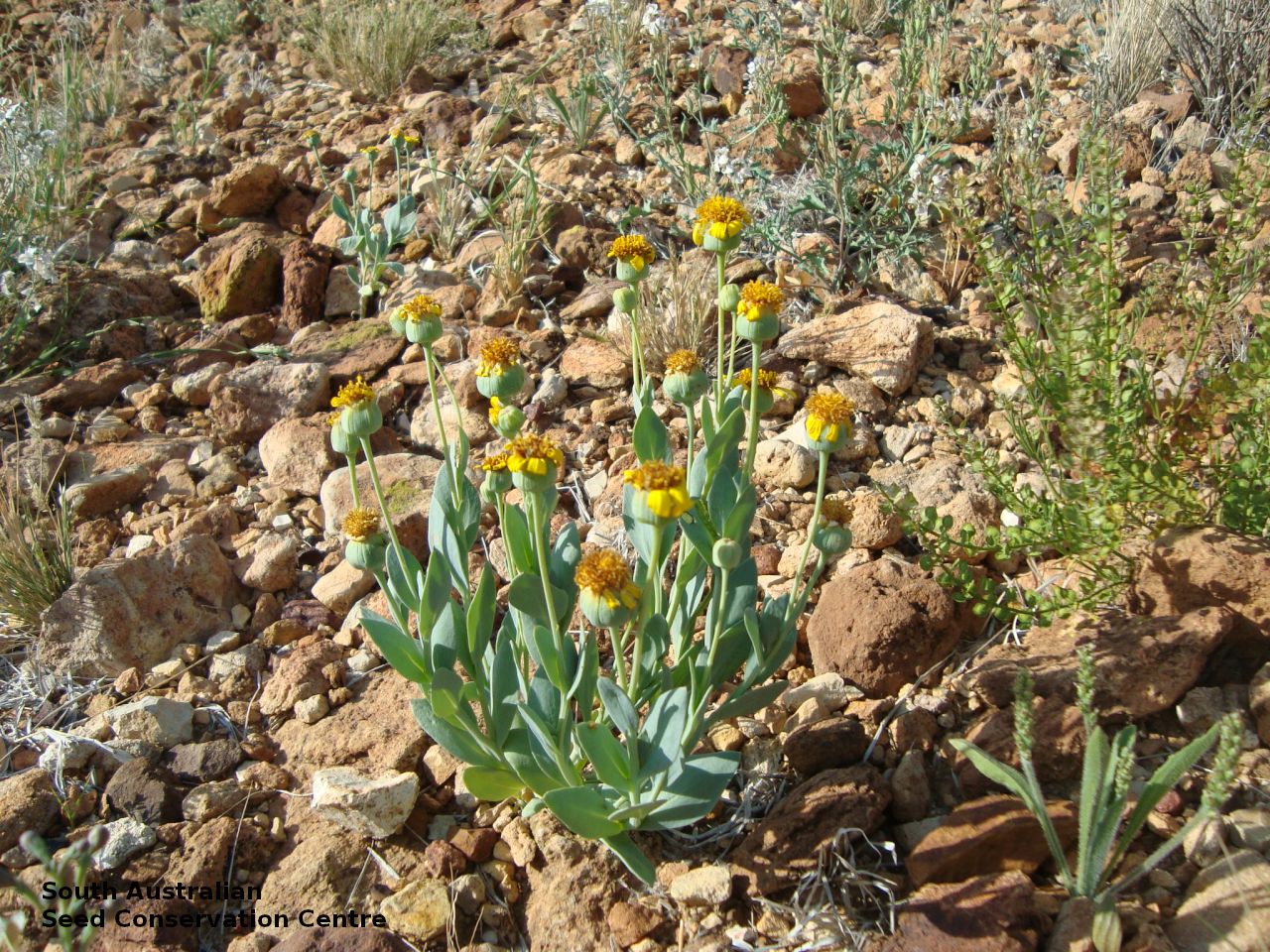
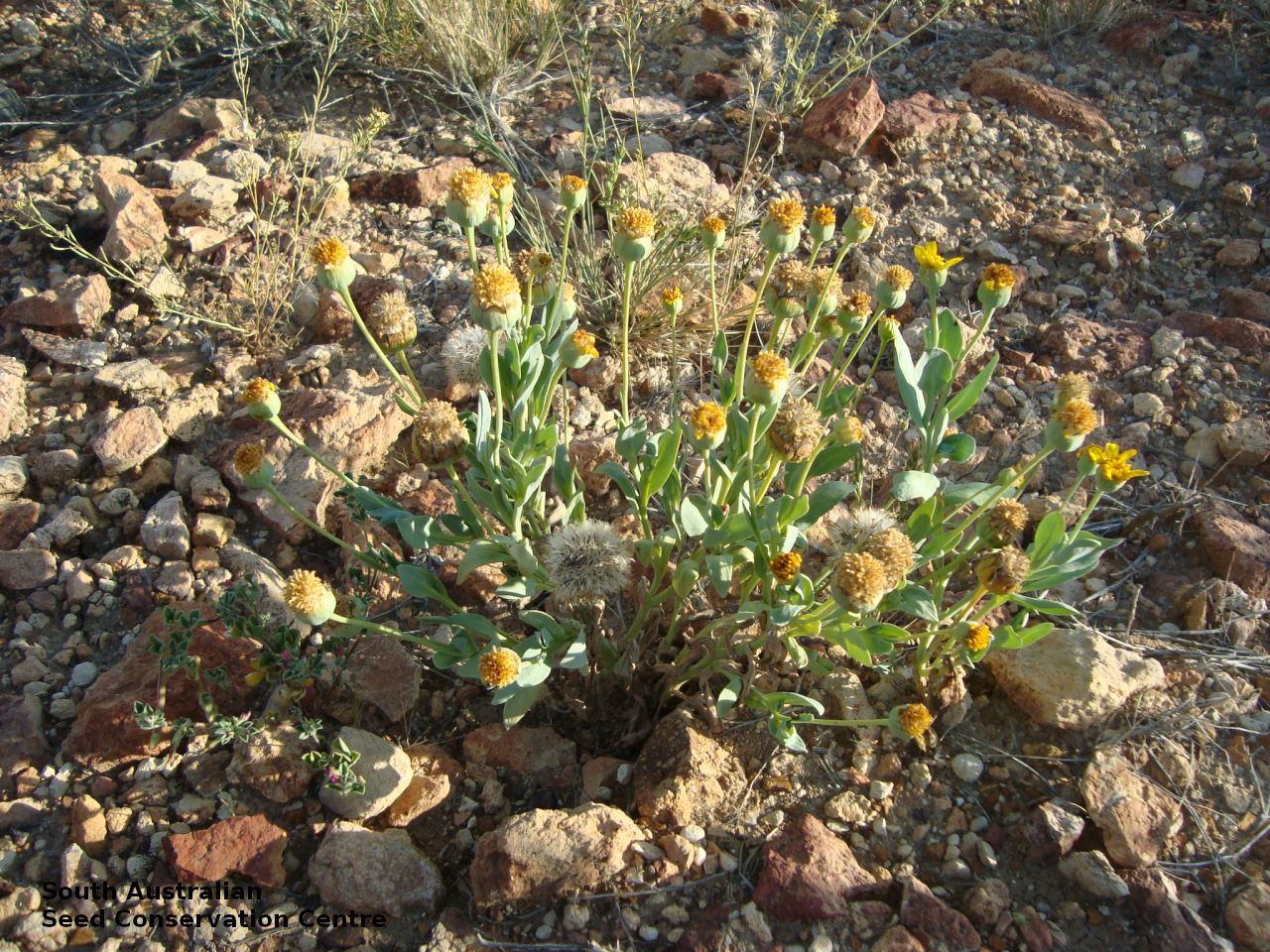

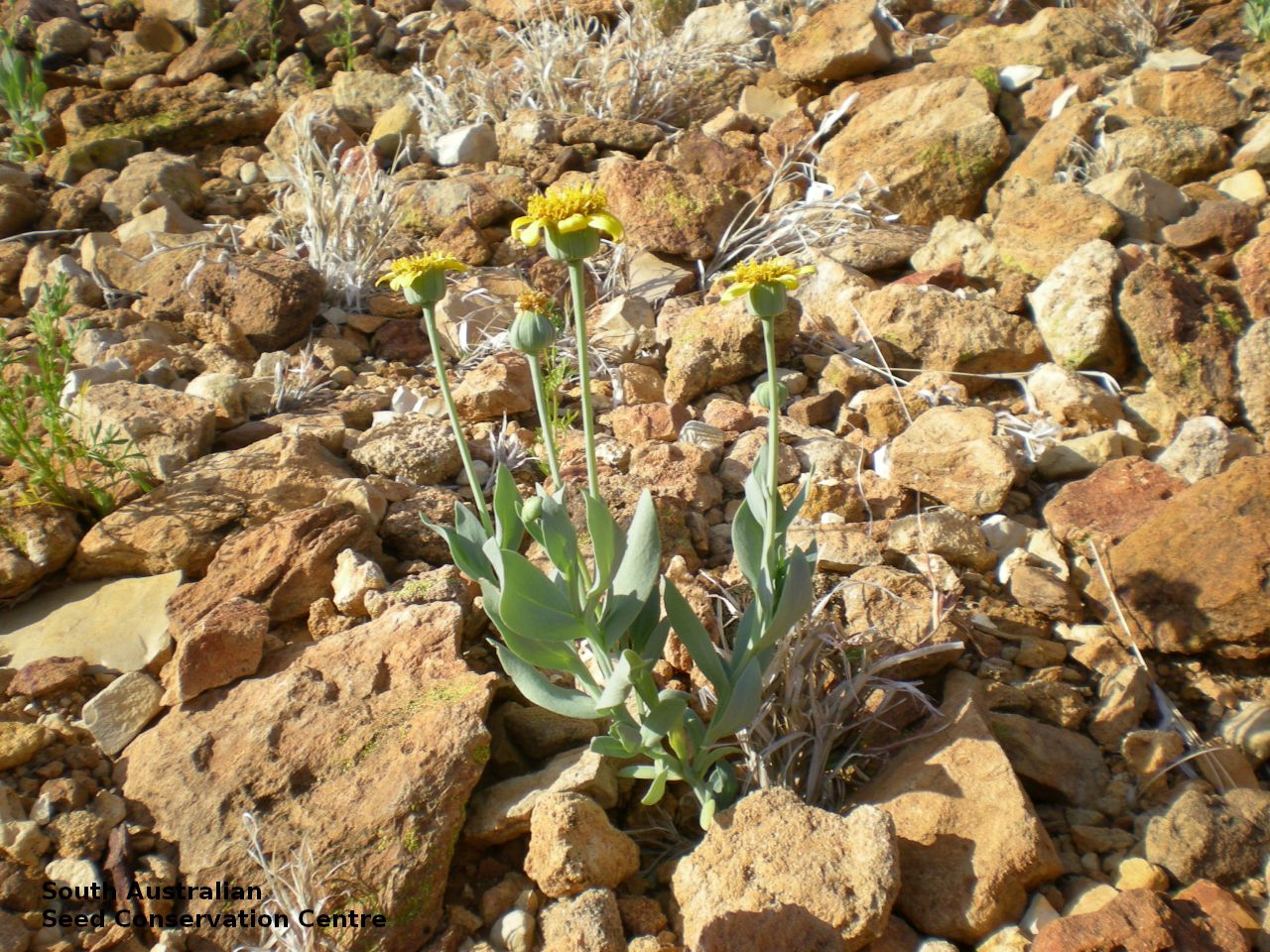

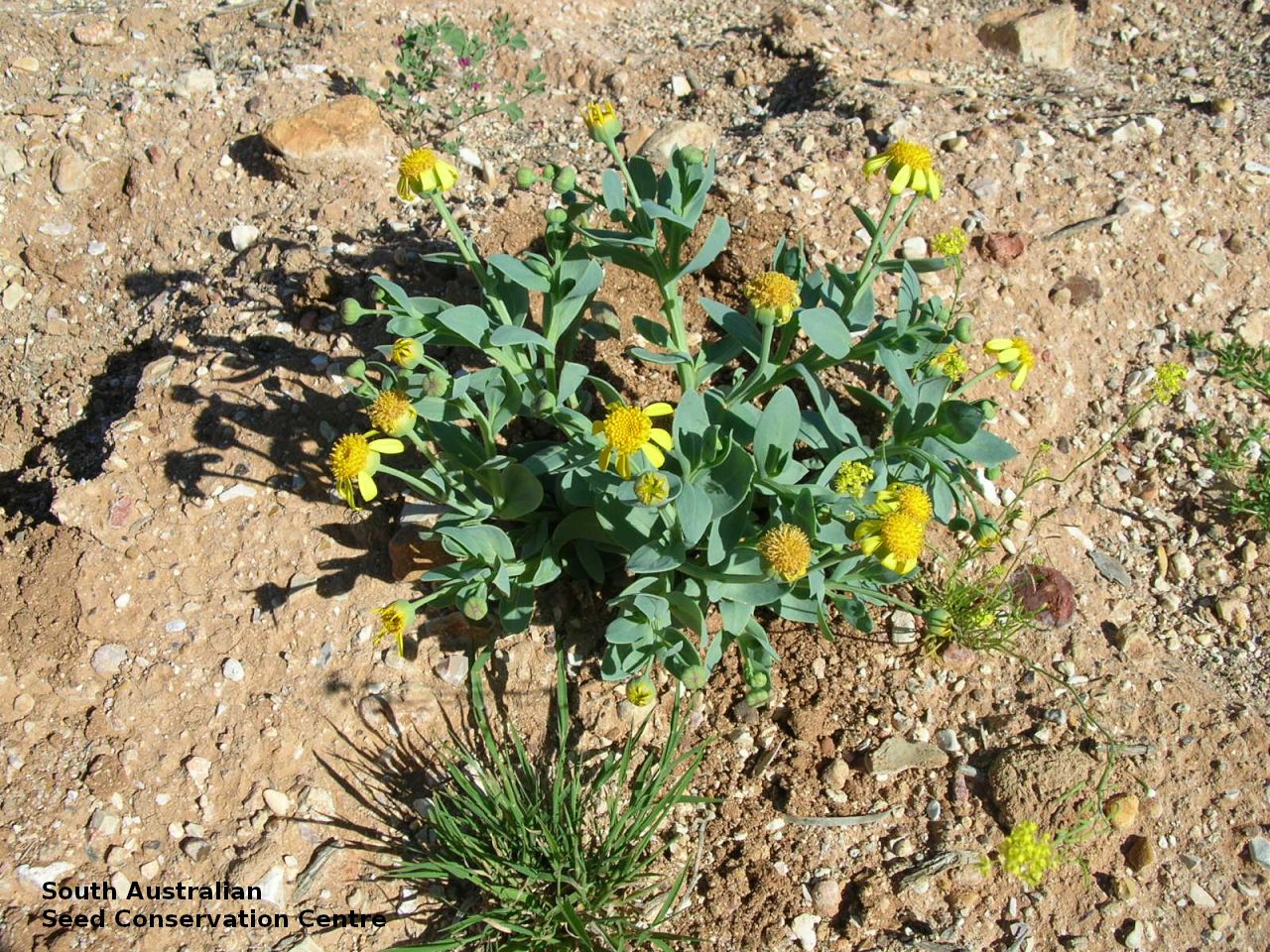
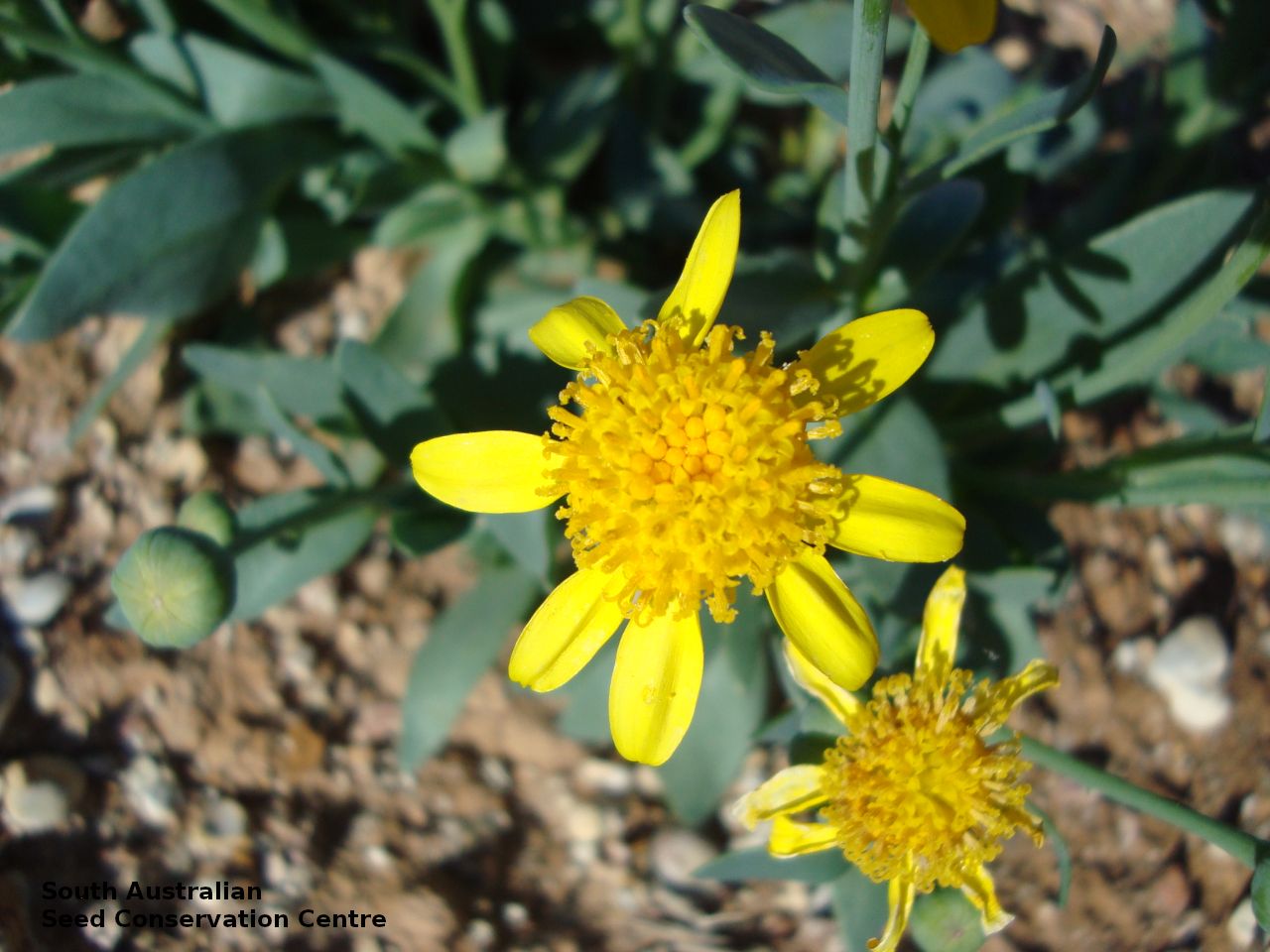
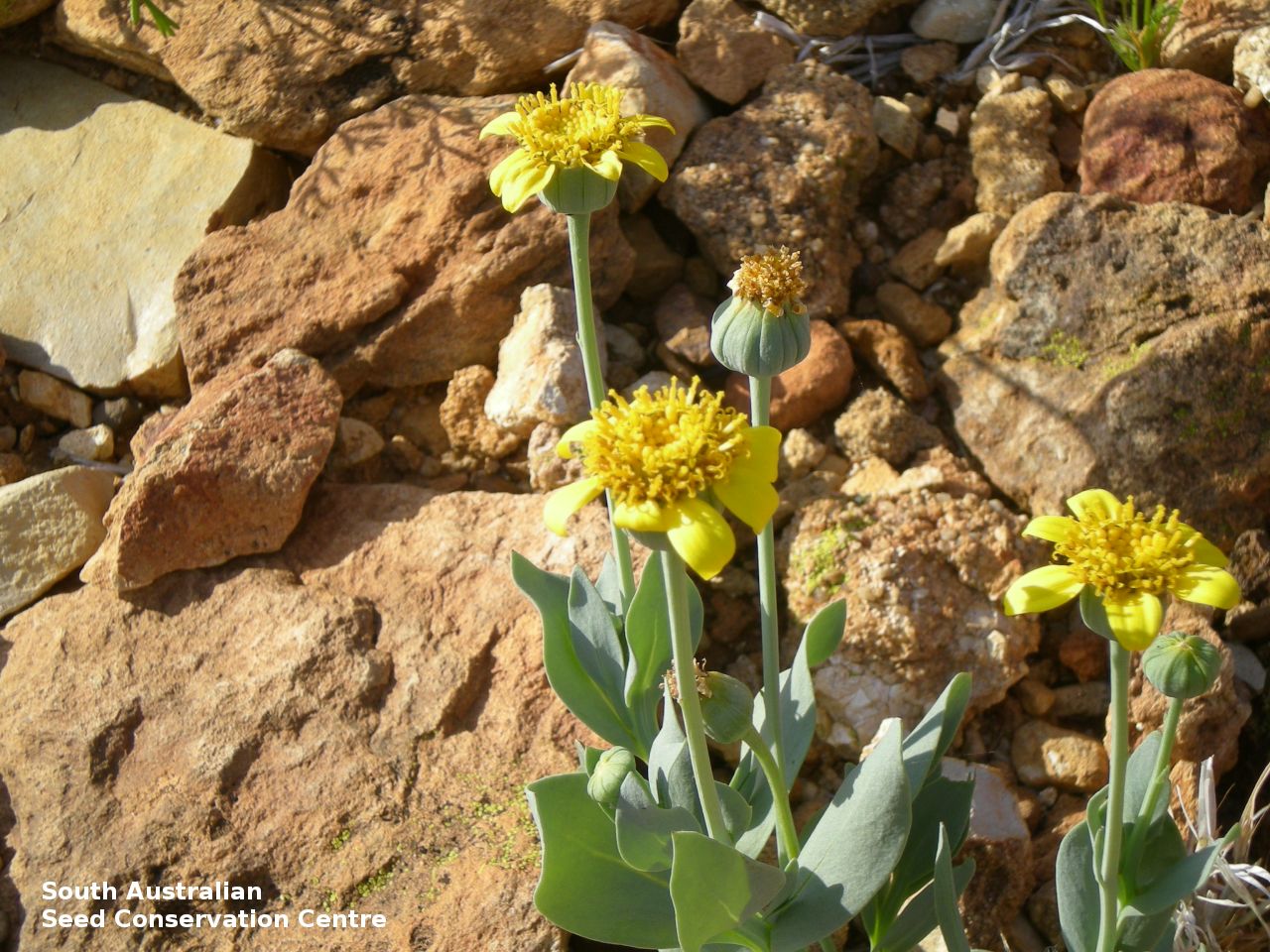
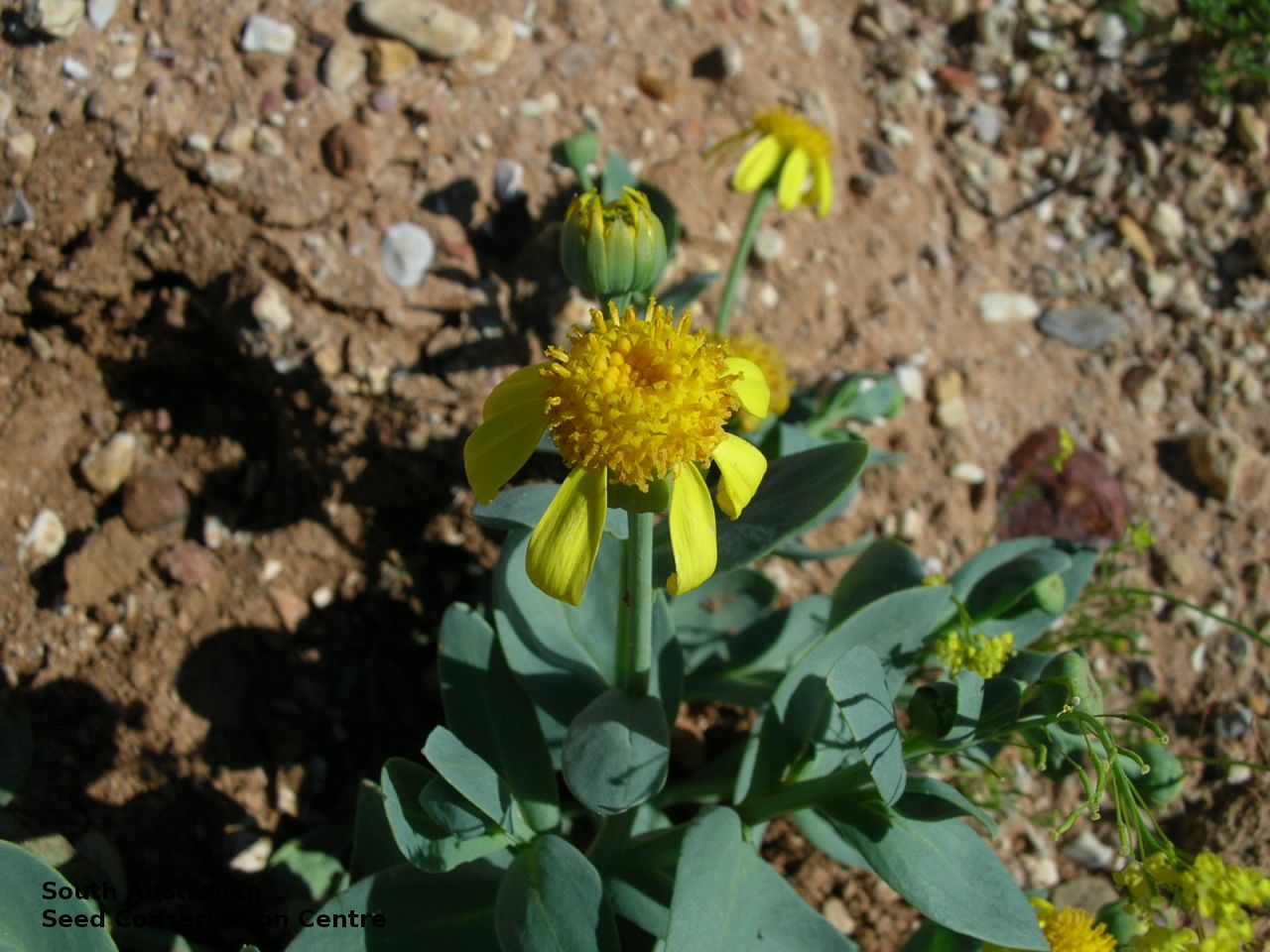
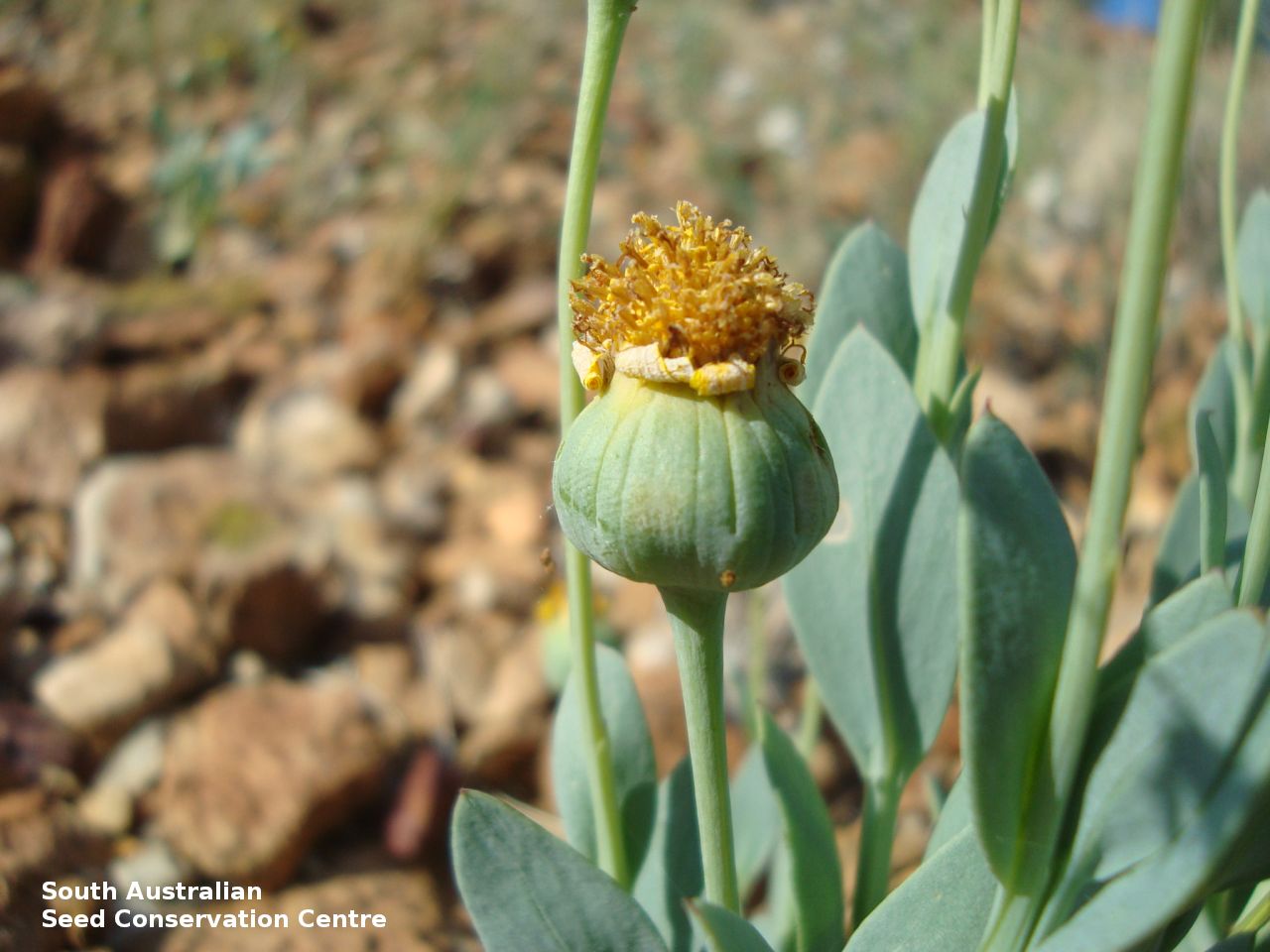
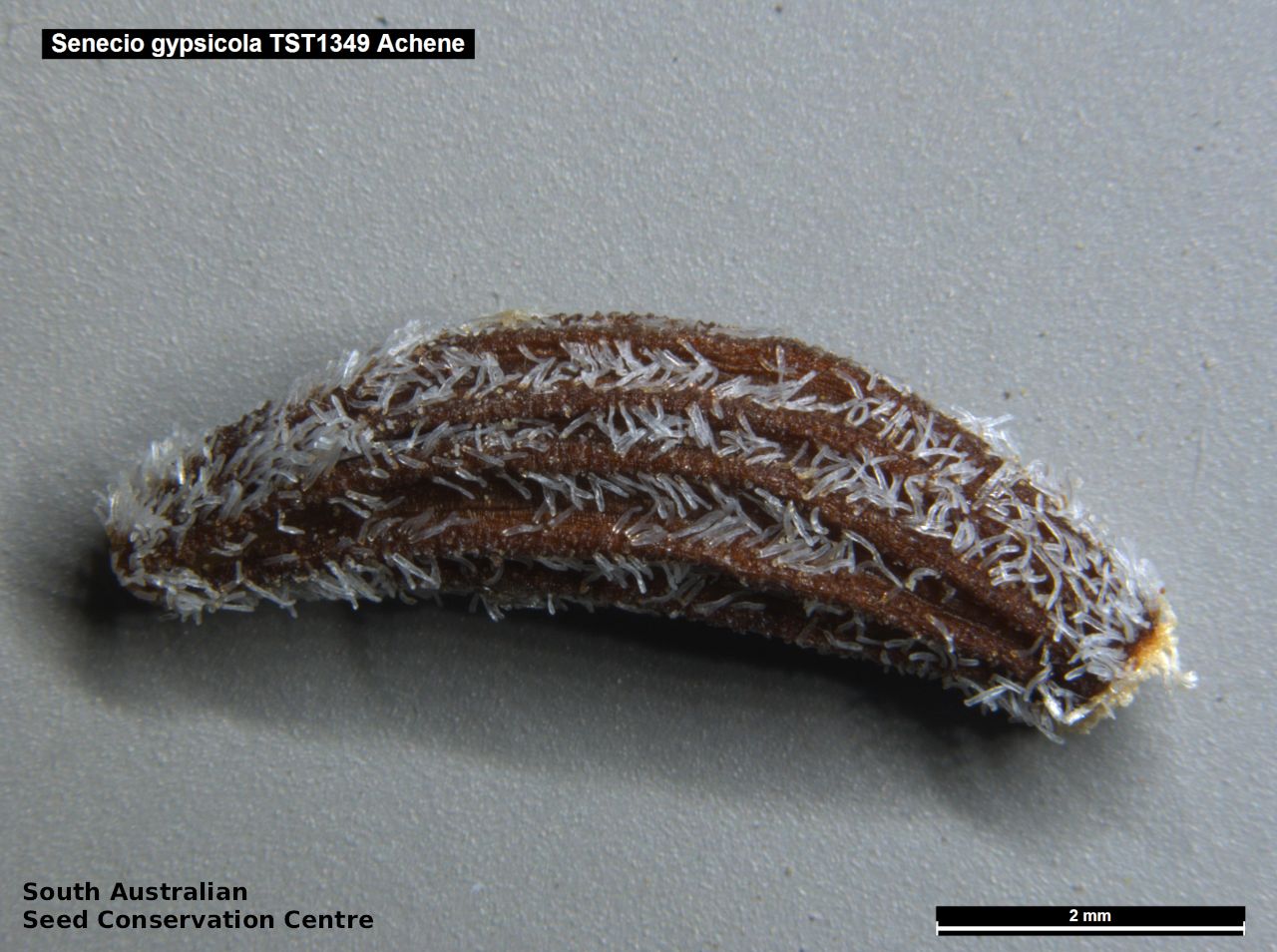
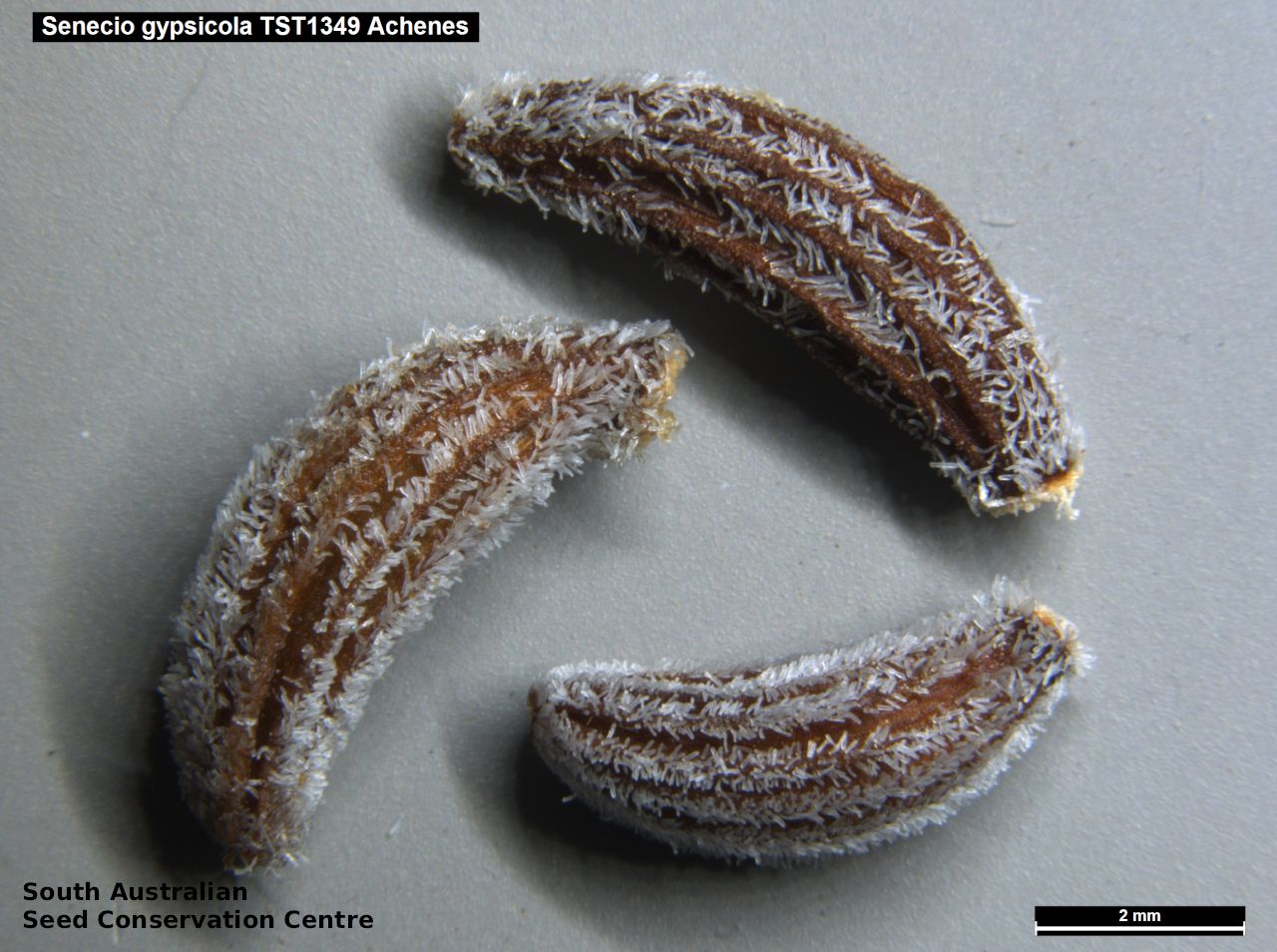
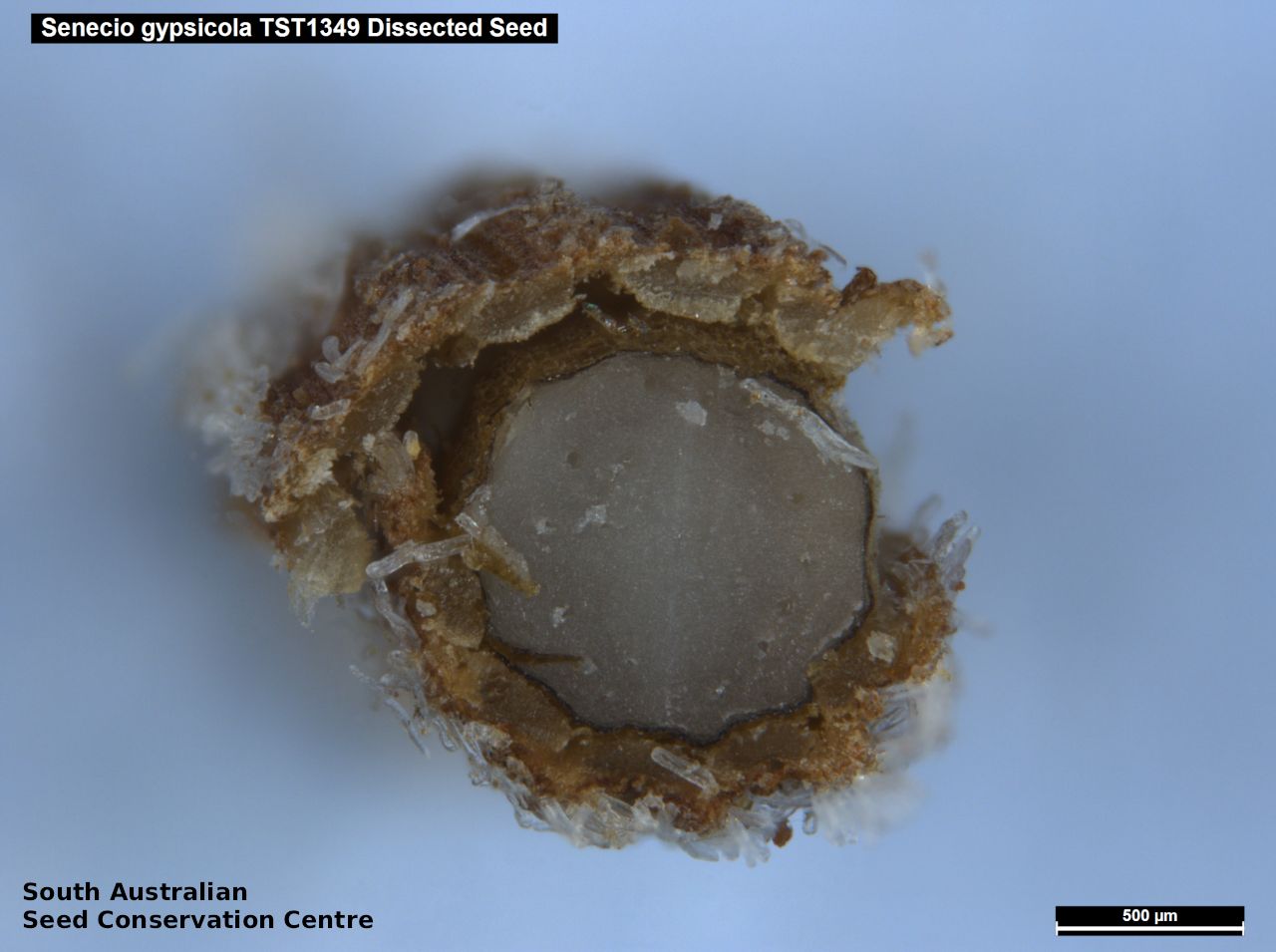

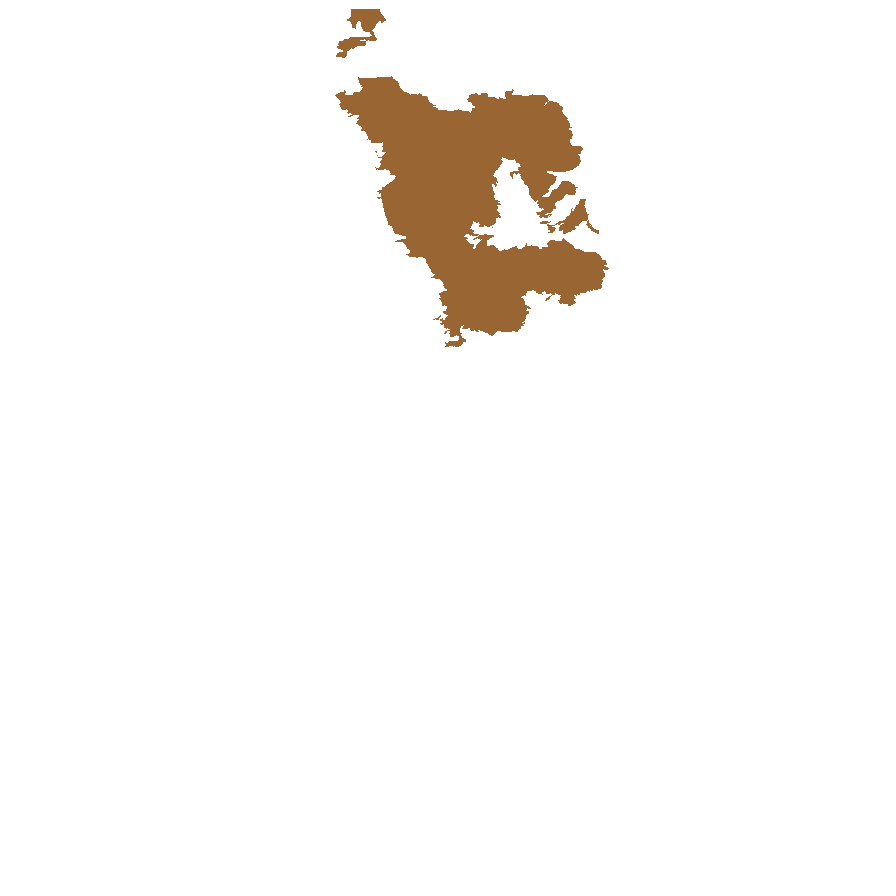
Prior names
Othonna gypsicola
Common names
Gypsum Groundsel
Gypsum Othonna
Etymology
Senecio from the Latin 'senex' meaning an old man; referring to the white pappus attached to the seed. Gypsicola from the Latin 'gypsum' meaning chalk or gypsum and 'colao' meaning dwelling, referring to the gypseous sites on which the species has been found.
Distribution and status
Endemic to South Australia and found in the north-central area, growing on mounds of black gypseous clay in ephemeral herbfields. Native. Rare in south Australia. More common after heavy rain.
Herbarium region: Lake Eyre
NRM region: South Australian Arid Lands
AVH map: SA distribution map (external link)
Plant description
Glabrous annual herb to 30 cm high. Stem leaves narrow-obovate to oblanceolate, to 4 cm long, undivided, leathery, bluish-green. Inflorescence solitary at terminal of stem with large yellow daisy-flower. Flowering between July and September. Fruits are large fluffy daisy-head with exposed white pappus. Seeds are dark brown curved oblong seed to 7 mm long and 2 mm wide, with longitudinal ridges covered in scattered white hairs and white pappus. Seed embryo type is spatulate fully developed.
Seed collection and propagation
Collect seeds between August and October. Collect heads that are large and fluffy. Either pick off the whole heads or use your finger and pull off the seeds from the head. Mature seeds will come off easily. Place the heads in a tray for a week to dry. No cleaning is required if only pure seeds are collected. If heads are collected, then rub the heads gently with your hands to dislodge the seeds. Viable seeds will be fat and hard. Store the seeds with a desiccant such as dried silica beads or dry rice, in an air tight container in a cool and dry place. From three collections, the seed viability were high, ranging from 95% to 100%.
| Location | No. of seeds (weight grams) | Number of plants | Date collected | Collection number Collection location | Date stored | % Viability | Storage temperature |
|---|---|---|---|---|---|---|---|
| BGA MSB | 2,400 (14.14 g) 2,400 (14.14 g) | 50+ | 5-Oct-2010 | TST1019 Lake Eyre | 1-Jan-2012 | 100% | +5°C, -18°C |
| BGA | 7,100 (33.79 g) | 100+ | 7-Sep-2013 | DJD2716 Lake Eyre | 24-Mar-2015 | 100% | +5°C, -18°C |
| BGA | 14,500 (85.33 g) | 100+ | 25-Sep-2016 | TST1349 Lake Eyre | 1-Nov-2017 | 95% | +5°C, -18°C, -80°C |
Number of plants: This is the number of plants from which the seeds were collected.
Collection location: The Herbarium of South Australia's region name.
% Viability: Percentage of filled healthy seeds determined by a cut test or x-ray.